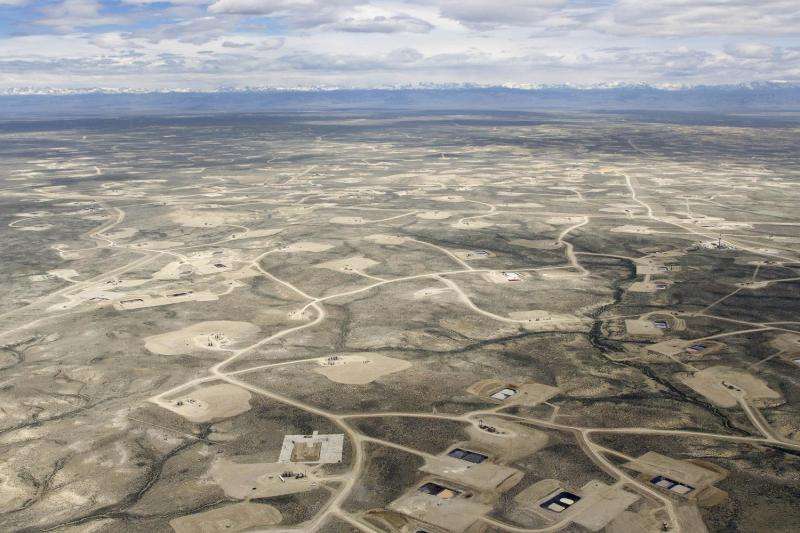April 24, 2015 report
Wide area study shows environmental impact of oil and natural gas drilling in North America

(Phys.org)—A team of researchers with affiliations to several academic institutions in the U.S. has conducted an analysis of the overall impact of oil and natural gas drilling in the U.S. and Canada over a period of twelve years. In their paper published in the journal Science, the team notes that such drilling involves the destruction of vegetation which is not being replaced which in turn is causing a major impact on the environment.
Oil and natural gas drilling in the U.S. and Canada has generated a lot of press in the past few years, most of it positive, as it has helped increase domestic supplies, thus reducing dependence on foreign oil. But, it has also experienced some criticism, some from people worried about small earthquakes that sometimes result due to fracking. More recently, some Earth scientists have begun to voice their concerns about the environmental impact of all the drilling and excavation that is occurring—as the authors note in this new effort, on average 50,000 new wells have been dug per year since the turn of the century. Their study covers the years 2000 to 2012 and looked at the impact of drilling on an ecosystems' net primary production (NPP)—a measure of the amount of carbon stored by all the plants in a given ecosystem.
To find the change in NPP due to drilling, the researchers looked at satellite images—that allowed them to see where there was vegetation, and then where it had been removed due to drilling over the study period. To find the NPP all they had to do was note the type of vegetation that was impacted and then count up the losses—approximately 10 Tg of biomass which translated to approximately 4.5 Tg of carbon. What they found most concerning was that the vegetation that was being removed, was not replaced after the mining operations concluded (approximately 90 percent of the land was privately owned, thus not subject to federal regulations). Many of the areas where the mining was taking place, the researchers note, was in areas where vegetation struggles to return on its own, which could mean the loss in biomass could have an impact for many years.
The researchers point out that at this point, no one really knows what the overall impact of the surge in mining and vegetation reduction will have on a continent-wide basis, but thus far it is easy to see the local impact, less vegetation means less diversity and less wildlife—an impact that does not appear to be taken into consideration by policymakers.
More information: Ecosystem services lost to oil and gas in North America, Science 24 April 2015: Vol. 348 no. 6233 pp. 401-402 DOI: 10.1126/science.aaa4785
Abstract
Advanced technologies in oil and gas extraction coupled with energy demand have encouraged an average of 50,000 new wells per year throughout central North America since 2000. Although similar to past trends (see the graph, this page), the space and infrastructure required for horizontal drilling and high-volume hydraulic fracturing are transforming millions of hectares of the Great Plains into industrialized landscapes, with drilling projected to continue (1, 2). Although this development brings economic benefits (3) and expectations of energy security, policy and regulation give little attention to trade-offs in the form of lost or degraded ecosystem services (4). It is the scale of this transformation that is important, as accumulating land degradation can result in continental impacts that are undetectable when focusing on any single region (5). With the impact of this transformation on natural systems and ecosystem services yet to be quantified at broad extents, decisions are being made with few data at hand (see the graph, this page).
Journal information: Science
© 2015 Phys.org


















